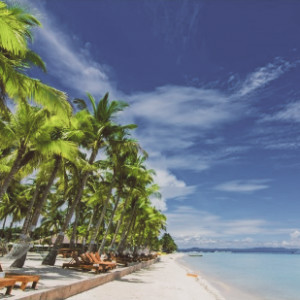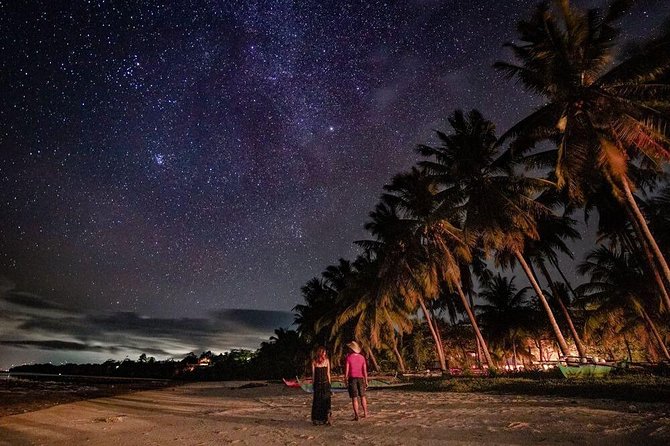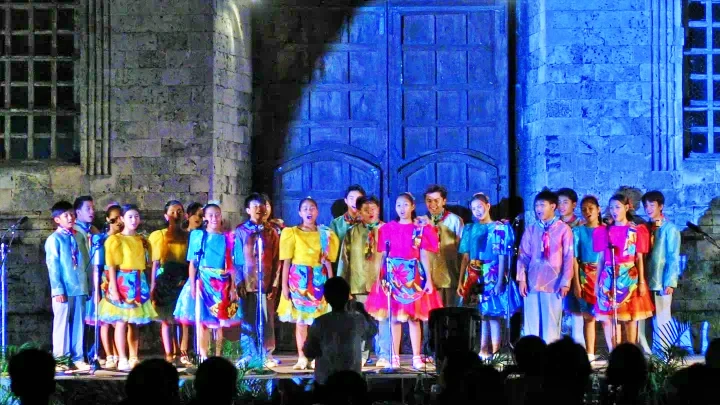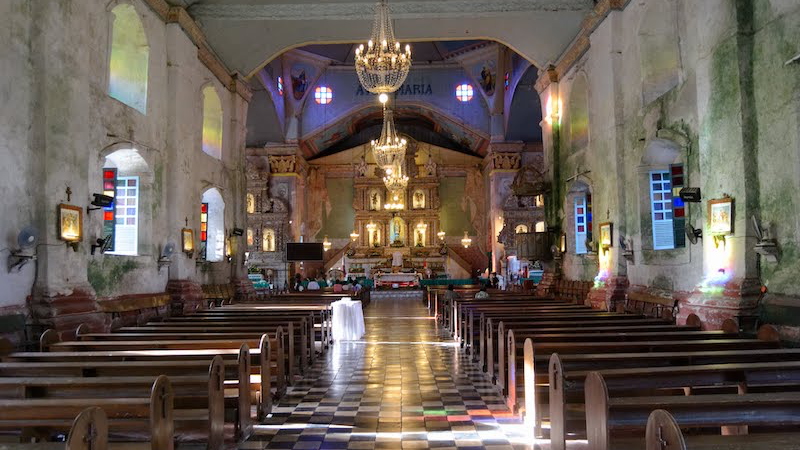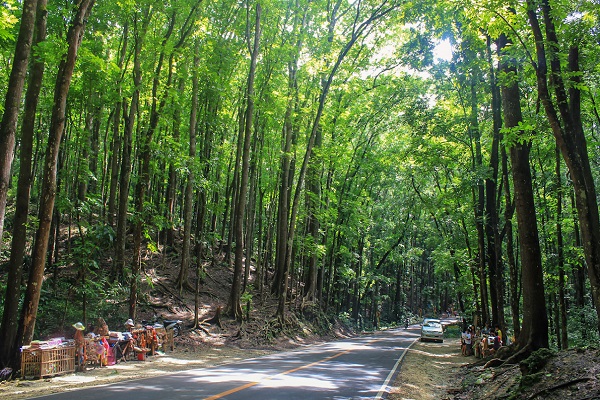Christmas in Loboc
Secure your Cebu Bohol ferry tickets today to start your unforgettable journey!
Christmas in Loboc is quite a wholesome experience. Officially it starts on December 16 with the Pontifical Masses during the 9-day “Misa de Gallo”. The “Misa de Gallo” is a Dawn Mass scheduled at 4 o’clock in the morning to herald the commemorative birth of our Lord Jesus Christ. In spite of the cold and the heavy languor that engulfs one during the wee hours of the morning, people force themselves to get up, change clothes and attend the Mass.
Attending the dawn Masses in Loboc is something unique. Yes, the Order of the Mass is the same with all the other churches throughout the whole world, yet Mass in Loboc is something different. Intersperse between rituals are heavenly music sang by the different choirs of Loboc, the most famous of which is the Loboc Children’s Choir and designated cantoras and cantores.
The songs are often sung in Latin with an organ accompaniment. The music that flows to all corners of the church lifts ones spirit to the heights and often brings you to the brink of tears. Yes, the holiness, the warmth, the . . . . I am at a loss for words on how to describe it, encompass ones heart and fills it to the brim. You feel like you are in heaven!
On vespers day, the day before Christmas, the Misa Pastorela is celebrated. It is a Mass cycle in Latin with Latin and Spanish songs sung with the accompaniment of the band and the orchestra. “Villancicos” (Spanish songs) are En Belen, Id a Belen, Alegres, Vamos Pastorcillos (usually in two voices) and Vamos Pastorcitos and the gozo of the dawn Mass “Bendito Sea El Niño Que Dios”.
“Calenda” then follow suit. The “Calenda” is a fascinating musical tradition following the vesper Mass. It is a ritual performed by a male teenager as a ‘rite of passage’ who will then graduate as a full-pledged musician and be a member of the Loboc Band.
The aspirant will then sing the song “the Januarii Octavo Calenda” in the plainsong tradition which is done in the Visayan language. The song relates about the creation of the world, other historical events in between until the coming of Jesus Christ.
No one can tell the exact origin of this song, but it has been handed down by the Lobocanons from generation to generation and actively performed up to the present. The tradition of singing this song started around the 1870’s. The Loboc Band was formally established in 1871. The “Calenda” ritual portrays and summarizes the core and spirit of each Lobocanon and their culture.
Christmas doesn’t end after the Calenda. It is a prelude to more festivities. Aside from houses decked with Christmas lights and decors, and the incessant voices of children carolling day in and day out, another activity ensue forth.
On the morning of December 25 up to February 2, the Feast of the Candles or “Candelaria”, the Local brass band with the cantoras, cantores and aspirants go around or make “suroy” to the different houses already assigned in the different barangays of the town. The group performs and sings a mixture of Spanish, Latin and Visayan songs, not limited to Christmas songs, but also any song that the host may request from them.
The band is composed of a mixed group of professional musicians who are engaged in other trades yet during this yuletide season are excused from their work for the simple joy of indulging in their God-given gifts of music and sharing it with others. They are joined by their musically talented students whether from the collegiate or high school levels in this special season of joy and sharing.
Some notable band members who have contributed to putting Loboc in the limelight are the late Iyo Ambo, the Bilirans, the Salig Brothers, the Balbins, the Varquezes, the Requirmes and several others.
Music is an integral part of the life of every Lobocanon. And their religiosity is part and parcel of their daily life. Thus both musicality and religiosity go hand in hand in a bid for self-expression and salvation. Yet what is striking is that, they do not go about this as one individual but as a community. Together, their music is expressed as a form of prayer or an offering, may it be for the Eternal Triune God or for a particular saint.
Most of the existing songs come from song sheets or “cantorales” that were produced in 1837. These “cantorales” were used exclusively for the services of the parish and contained music for special feasts and other occasions in the liturgical calendar of the Roman Catholic Church.
For a much meaningful Christmas, go to Loboc and immerse yourself in their heavenly music and while there, enjoy the sights and other sounds that the town offers. Try the night river cruise on the Loboc River and enjoy the lights as it shimmers on the waters and be treated to love songs by local serenaders. The experience is worth every peso that you spend, so go for it!
Recommended Bohol Philippines Tours
[ Bohol Sight Seeing Day Trips - Check Out Availability ]
[ Full Day Cruise and Sailing Tours - Check out Availability ]
[ Full Day Adventure Tours - Check out Availability ]
Discover more of Bohol's natural wonders through our recommended tours. Click on the links below to embark on unforgettable adventures:
Ready to explore the beautiful islands of Cebu and Bohol? Secure your ferry tickets today through 12go and start your unforgettable journey!
Ready to explore the beautiful islands of Cebu and Bohol? Secure your ferry tickets today through 12go and start your unforgettable journey!
recommended hotel booking
Book your stay in Bohol's breathtaking surroundings through Agoda and experience the ultimate relaxation
Top 25 Sights and Attractions in Bohol
- Chocolate Hills
- Tarsier Conservation Sanctuary
- Panglao Island
- Loboc River Cruise
- Hinagdanan Cave
- Balicasag Island
- Alona Beach
- Bilar Man-made Forest
- Blood Compact Shrine
- Baclayon Church
- Bohol Bee Farm
- Anda Beach
- Sipatan Twin Hanging Bridge Loboc
- Danao Adventure Park
- Sagbayan Peak
- Butterfly Conservation Center
- Clarin Ancestral House
- Dimiao Twin Falls
- Mag-Aso Falls
- Anda White Beach
- Lamanok Island
- Rajah Sikatuna Protected Landscape
- Dauis Church
- Can-umantad Falls
- Punta Cruz Watchtower
Top 20 Destinations of Bohol
- Tagbilaran City
- Panglao Town
- Talibon Town
- Anda Town
- Loboc Town
- Dauis Town
- Ubay Town
- Tubigon Town
- Loon Town
- Jagna Town
- Alicia Town
- Carmen Town
- Getafe
- Danao Town
- Bilar
- Alburquerque
- Sierra Bullones
- Sagbayan Town
- Baclayon Town
- Antequera
Ready to explore the beautiful islands of Cebu and Bohol? Secure your ferry tickets today through 12go and start your unforgettable journey!
All Rights Reserved ©2023. Bohol Philippines Travel Guide
Address: Talibon, Bohol, Philippines





